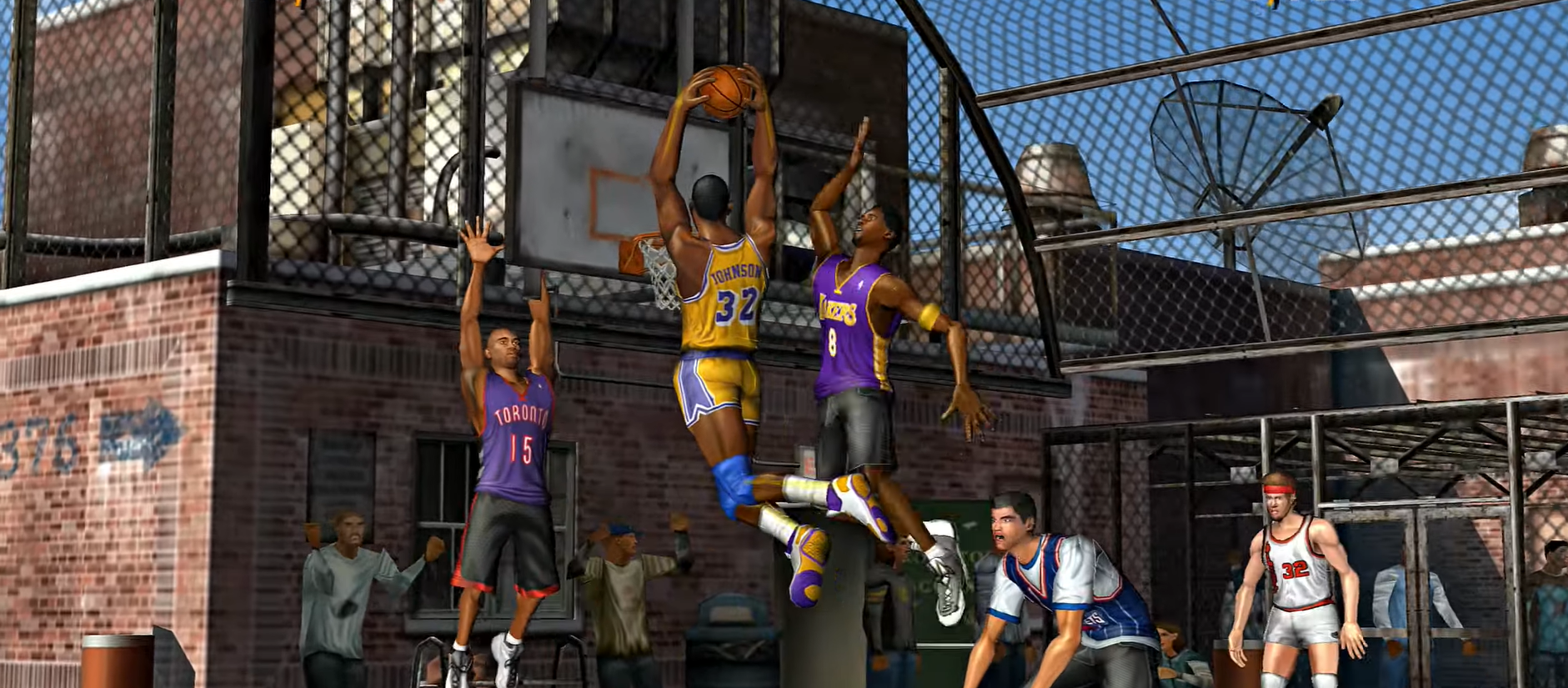

“Lasagna on the grill!”
A few weeks ago the urge struck me to dig around in my parents’ basement with the hope of finding NBA Street Vol. 2, a cherished childhood classic. My family was in the midst of a stressful season and a fondly remembered arcade-style game seemed like the perfect remedy. I’m happy to say that my instincts served me well (and also that the stressful season has mostly passed)—it’s as fresh as the day I first played it.
Anytime I think of NBA Street Vol. 2, my memories become awash in the warm glow of nostalgia. ‘They Reminisce Over You’ begins spinning on my mental turntable as images of bygone eras of basketball culture, elevated into the realm of myth by the game’s cartoonish presentation, filter through my mind’s eye. Dr. J squares off against Michael Jordan on the bubblegum-speckled blacktop, Wilt tangles with Shaq in graffiti-laden rec centers, Larry Bird teams up with Pistol Pete and Kobe Bryant, and Bobbito Garcia barks out nonsensical inanities as streetballers and NBA legends alike soar through the air and clash above the rim. It’s like a delirious Slamball version of Field of Dreams, an exaggerated playground legend passed around by word of mouth.
I figured there was a good chance that my memory had subtly elevated the game to a status that it didn’t deserve. That’s been the case with many other favorites of my youth that have failed to impress when revisited. Part of that diminishment is simply a function of time as gameplay gets smoothed out over iterations, graphics improve, and player expectations change. But NBA Street Vol. 2 has lost little of its luster in the twenty years since its release. Its mash-up of styles from various NBA eras with streetball aesthetics remains tasteful, its integration of golden age hip hop and DJ Cucumber Slice riffs is still inspired and intoxicating, and, all-importantly, its physics-defying gameplay follows Bushnell’s Law: easy to learn, hard to master.
That last point is crucial because clunky and/or shallow gameplay is the primary reason that many games fail to endure. NBA Street Vol. 2 has a simple control scheme that a novice can grasp well enough to string together some impressive looking play. A few taps of a face button will get you some nifty moves, and the game automatically tosses in a few tricks here and there for visual flow. However, the main thrust of the game, which separates it from a standard basketball simulator, mechanically-speaking, is its ancillary scoring system which tracks “style points” and allows the player to reduce their opponent’s score with “gamebreakers.” This secondary game is where the men are separated from the boys, so to speak, and where the novice will get obliterated by a player who is familiar with the game. Where the new player will be content to do an exaggerated crossover and dunk from the freethrow line—which, yeah, it still feels awesome to do that even after you’ve played the game for dozens of hours—the veteran will be throwing the ball off their opponent’s head, doing cartwheels and kick passes, and alley-ooping off the backboard. Doing the more elaborate stuff isn’t complicated, per se, but it does require some muscle memory and phalangeal dexterity.
That everything fell perfectly into place on NBA Street Vol. 2 is not some arcane secret, however. Indeed, after I played through the game for the eighth time (I had seven completed saves from all those years ago) I found that many others have professed a longstanding affection for it. Check out this hagiographic oral history put together by The Ringer a few years ago that outlines the history of basketball video games, interviews the diverse creative team that crafted the game’s unique style, explores the appeal of its distinctive aesthetic, and discusses the transition of basketball culture in the early 2000s. Perhaps most significantly, NBA Street Vol. 2 celebrates the artistry of athletic innovation by holding it in the same regard as more established modes of expression.
Note: This article paved the way for me to receive the dubious honor of being quoted in the New York Times.